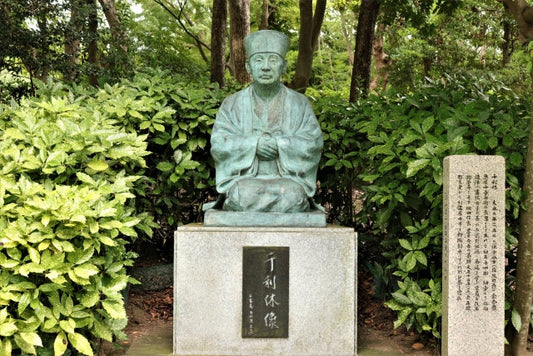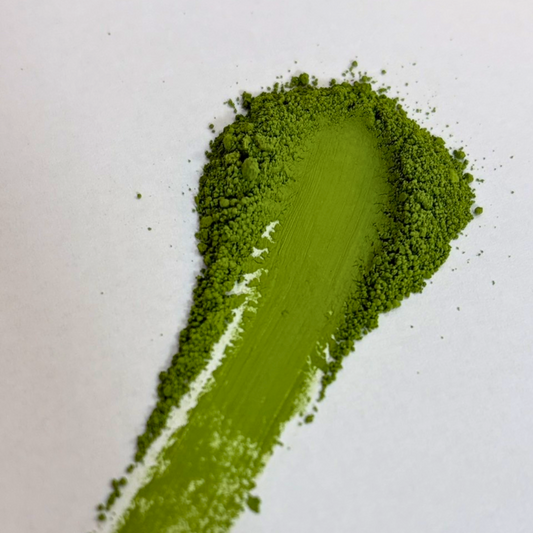Introduction
Matcha is a beverage with a long and layered history. More than just a drink, it has been
passed down as par of cultural traditions, adapting over time while remaining close to
people’s lives.
Today, matcha has become a global trend, crossing borders and continuing to captivate
many. In this article, we trace the history of matcha and explore the timeless appeal behind it.
A Thousand Years of Matcha History

Matcha originated in China more than a thousand years ago and was later introduced to
Japan. Below is a historical timeline showing how matcha culture developed in Japan:
|
Heian Period (794–1185) |
● Tea seeds and tea culture were brought to Japan from the Tang Dynasty in China. |
|
Kamakura Period (1185–1333)
|
● The monk Eisai promoted tea culture alongside Zen Buddhism. ● Full-scale tea cultivation began in Japan. |
|
Nanbokucho to Muromachi Period |
● Tea drinking spread among the warrior class. ● The foundation of wabi-cha (a simplified and spiritual form of tea ceremony) began to emerge. |
|
Azuchi-Momoyama Period |
● Sen no Rikyū perfected wabi-cha, shaping the essence of the tea ceremony. |
|
Meiji Period |
● The tea ceremony became widespread among samurai families. ● Sencha and Gyokuro teas were developed. |
|
Meiji Period |
● Tea exports flourished. ● Sencha became mainstream and matcha declined temporarily. |
|
Taisho to Showa Period (1912–1989) |
● Matcha began to be used in foods. |
|
Heisei to Present (1989– ) |
● Matcha sweets became popular in Japan. ● The global “MATCHA” boom took off. |
Let us now take a closer look at how the early form of matcha developed in China, and how it eventually took root and evolved in Japan.
The Origins of Matcha in China

Tea is believed to have originated in China. Records from the 3rd century reference tea, and in the 8th century, The Classic of Tea (Lu Yu) compiled the basics of traditional Chinese tea culture.
At the time, tea was often consumed in solid form-compressed tea bricks.
The practice of drinking powdered tea, similar to modern matcha, seems to have emerged after the 10th century. Da Guan Cha Lun, a treatise written by a Chinese emperor, includes descriptions of powdered tea preparation and tools resembling today's chasen (bamboo whisk).
Eventually, however, powdered tea culture devclined in China. Instead, it took root and flourished in Japan, where it developed into uniquely Japanese tradition.
Introduction of Tea to Japan

Tea was introduced to Japan after the 9th century. Records show that monks who had studied in China brought back tea seeds and began cultivating them in Japan.
There are also accounts of monks offering tea to the emperor.
However, at this time, tea remained confined to monks and aristocrats and did not spread widely. Over time, it faded from mainstream use.
Eisai and the Spread of Tea Culture

The true spread of tea culture in Japan began in the 12th century with the Zen monk Eisai. He is known not only as the founder of Japanese Zen Buddhism but also as the “father of tea” in Japan.
During his time in China, Eisai discovered tea as a way to stay alert and enhance concentration during meditation. Upon returning to Japan, he promoted tea cultivation and wrote Japan’s first book dedicated to tea: Kissa Yōjōki (“Drinking Tea for Health”).
Through this work, the practice of preparing powdered tea by adding hot water was intoroduced to Japan, along with a processing sty;e similar to tencha, the raw material of matcha today. This had a significant influence on the development of Japan's tea culture.
The Development of Matcha Culture in Japan

By the 14th century, Kyoto’s Uji region had gained special status from the shogunate and was developing into a renowned tea-growing area. Historical texts from this period show that the term “matcha” began to be used.
Originally consumed as medicine, matcha became a social and recreational beverage among the warrior class.
Meanwhile, tea practitioners influenced by Zen philosophy began developing a unique cultural practice known as chanoyu, or the tea ceremony.
Samurai Tea Gatherings and the Birth of Wabi-cha

From the 14th century, samurai enjoyed tea while appreciating art and participating in tasting contests based on tea origin.
In contrast to these lavish gatherings, the monk Murata Jukō, also a tea master, advocated for a simpler, more spiritual approach to tea, rooted in Zen philosophy.
This marked the beginning of wabi-cha—a style of tea ceremony emphasizing modesty, tranquility, and inner reflection.
Sen no Rikyū and the Completion of Wabi-cha

In History of the Church of Japan, written by Portuguese missionary João Rodrigues, records show that tencha (the precursor of matcha) cultivation was flourishing in 16th-century Japan.
Around this time, Sen no Rikyū, a disciple in Murata Jukō’s lineage, emerged as a leading tea master.
Rikyū served as sadō (tea advisor) to powerful warlords like Oda Nobunaga and Toyotomi Hideyoshi. Through this role, he perfected wabi-cha, establishing the philosophical and aesthetic foundation of today’s tea ceremony.
His influence on matcha culture remains profound and enduring.
The Establishment of the Tea Ceremony and the Rise of Sencha and Gyokuro

In the 17th century, the tea ceremony was formally incorporated into the rituals of the Tokugawa shogunate. Shoguns received instruction in tea ceremony, and tea producers (chashi) were granted official status.
While matcha became ingrained in samurai society, the invention of sencha ーa more casual, stepped teaーallowed tea drinking to spread among the gereral public.
Later, the high-grade gyokuro tea emerged, adding further variety to Japan's tea culture.
Matcha in the Modern Era
Modernization and the Continuation of Tea Culture

As Japan modernized and the shogunate dissolved, official tea advisors lost their patrons, and the tea ceremony declined. Sencha became the mainstream tea in Japan, and matcha cunsumption fell.
However, tea ceremony was adopted in girls' education institutions, allowing it to continue through a new generation of practitionersーespecially women.
In 1906, Okakura Tenshin published The Book of Tea in English, introducing Japanese tea philosophy to the West.
Changes in Tea Industry and the Rise of Matcha Sweets

With modernization, tea production became mechanized. Traditionally, cunsumers purchased tea leaves and ground it themselves. With electric stone mills, matcha became available pre-ground.
Native tea plants were gradually replaced with cultivated varieties. Matcha, once used solely in tea ceremonies, became an ingredient in sweets and ice cream.
By the late 20th century, matcha desserts surged in popularity, sparking the so-called "matcha boom" within Japan. Later global brads like Häagen-Dazs and Starbucks began incorporating matcha into their products, accelerating the trend.
The Global "MATCHA" Boom

Today, matchaーoften sppeled in Roman lettersーhas become a globally recognized product.
Since around 2010, matcha cafes have spread in the U.S. and Europe. The rise of Instagram amplified matcha's vibrant visual appeal, furher fueling its popularity.
Japan's tea exports, including matcha, have hit record highs. Uji-based tea shops report soaring demand, particulary from international tourists, often exceeding supply.
Unlike previous domestic trends, today's global matcha boom emphasizes health. Abroad, matcha is now regarded as a superfood, appealing to wellness-conscious consumers.
Yet this focus on health is not new. Eisai, who introduced tea to Japan, had already recognized its health benefits centuries ago. Today's matcha renaissance may be an opportunity to recconect with its original value.
Matcha's Timeless Appeal

From its Chinese origins to its cultural refinement in Japan and its current global popularity, matcha's story spans centuries.
It reflects not only historical change but also human connection to wellness, reflection, and ritual. Whether as medicine, social tradition, or a path to presence, macha continues to offer quiet depth.
We hope this article inspires you to revisit your own matcha prractice and find a moment of calm in preparing and savoring your tea.



